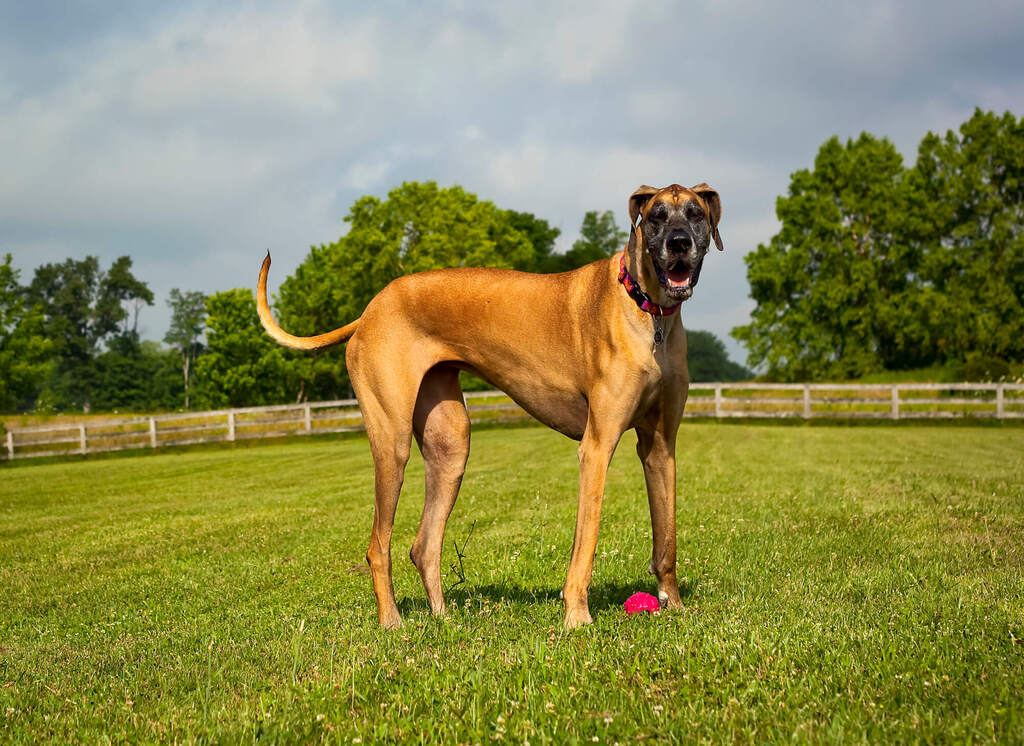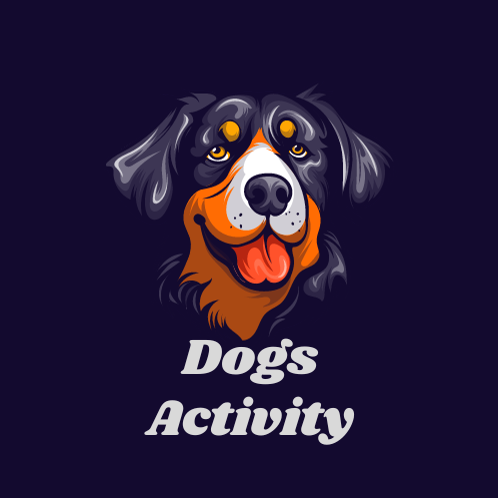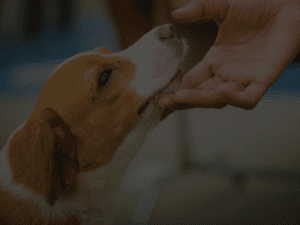
Scooby-Doo, where are you? This iconic catchphrase has been a part of popular culture for over five decades. Scooby-Doo, the lovable and cowardly Great Dane, has been solving mysteries and sharing adventures with his human friends in countless animated series, movies, and merchandise. But what kind of dog is Scooby, and how did this character become a beloved icon? In this article, we’ll delve into the mystery of Scooby-Doo’s breed and explore the fascinating history and cultural significance of this endearing cartoon canine.
I. The Birth of Scooby-Doo
Before we uncover the breed of Scooby-Doo, let’s take a closer look at his origins. Scooby-Doo made his first appearance in the animated TV series “Scooby-Doo, Where Are You!” which premiered on September 13, 1969. The show, created by Joe Ruby and Ken Spears, was produced by the renowned animation studio Hanna-Barbera. It was an instant hit and marked the beginning of a franchise that would span multiple series, movies, and merchandise.
A. Scooby’s Design
Scooby-Doo was designed by Iwao Takamoto, a prominent character designer and animator at Hanna-Barbera. Takamoto was given the task of creating a funny and lovable dog character for the show. He drew inspiration from a variety of sources, including the classic film “The 7th Voyage of Sinbad,” where a cowardly dog named “Shaggy” provided the inspiration for Scooby’s best friend and namesake, Shaggy Rogers.
B. Name Origin
The character’s name, “Scooby-Doo,” was inspired by Frank Sinatra’s scatting in his song “Strangers in the Night.” The phrase “doo-be-doo-be-doo” served as the basis for Scooby’s name, highlighting the character’s fun and whimsical nature.
C. The Mystery Gang
Scooby-Doo is often seen as the heart of the Mystery Inc. gang, which includes Shaggy Rogers, Fred Jones, Daphne Blake, and Velma Dinkley. Together, they travel in their iconic van, the Mystery Machine, solving mysteries involving supposedly supernatural creatures and unmasking villains who are behind these hoaxes.
II. What Kind of Dog is Scooby-Doo?
Now, let’s get to the bottom of the mystery and determine what kind of dog Scooby-Doo actually is. Despite his unique appearance and distinct personality, Scooby-Doo is undeniably a Great Dane.
A. Great Dane Characteristics
- Size: Great Danes are one of the largest dog breeds in the world. They are known for their immense size, with males typically standing between 28 to 34 inches at the shoulder and weighing anywhere from 140 to 175 pounds. Scooby-Doo’s towering presence and gentle nature align perfectly with this breed’s characteristics.
- Coat: Great Danes have short, smooth coats that are easy to maintain. Their coat colors can vary, but the classic “Scooby-Doo” coloring is fawn with black markings, which includes the black mask around the eyes, similar to Scooby’s distinctive facial features.
- Personality: Great Danes are often described as gentle giants. They are known for their friendly, affectionate, and somewhat goofy nature, which closely mirrors Scooby-Doo’s personality. These dogs are typically good with children and other pets and tend to be quite sociable.
- Lifespan: Great Danes have a relatively short lifespan, usually ranging from 7 to 10 years. Scooby-Doo’s age is not explicitly mentioned in the series, but he is portrayed as an adult dog, which aligns with the average lifespan of a Great Dane.
B. Scooby-Doo’s Popularity
Scooby-Doo’s appeal extends far beyond his breed. His quirky character, trademark catchphrases, and unwavering loyalty to his friends have made him an enduring and beloved character in the world of animation. The show’s longevity and continued success are a testament to the timeless charm of Scooby-Doo and the enduring fascination with mysteries and the supernatural.
III. Scooby-Doo’s Impact on Popular Culture
The “Scooby-Doo” franchise has left an indelible mark on popular culture, influencing generations of viewers and inspiring countless adaptations, spin-offs, and merchandise. Here are some key aspects of Scooby-Doo’s impact on popular culture:
A. Spin-Offs and Adaptations
The success of “Scooby-Doo, Where Are You!” led to numerous spin-off series and adaptations over the years. Some of the notable series and adaptations include:
- “The New Scooby-Doo Movies” (1972-1973): This series featured Scooby and the gang teaming up with various guest stars, including Batman and Robin, the Harlem Globetrotters, and more.
- “Scooby-Doo and Scrappy-Doo” (1979-1980): This series introduced Scooby’s scrappy nephew, Scrappy-Doo, and focused on their adventures.
- “A Pup Named Scooby-Doo” (1988-1991): This series provided a humorous and imaginative take on the gang’s adventures, portraying them as young children solving mysteries.
- “Scooby-Doo! Mystery Incorporated” (2010-2013): This series took a more serialized and darker approach to the “Scooby-Doo” universe, delving into the history of Crystal Sarcophagus and the origins of various mysteries.
B. Cultural References
Scooby-Doo has become a cultural reference point, with his name and catchphrases often used in various contexts. The character’s influence can be seen in everything from Halloween costumes to references in other TV shows, movies, and literature.
C. Merchandise
Scooby-Doo’s popularity has spawned a vast array of merchandise, including toys, clothing, video games, and collectibles. Fans of all ages can find Scooby-Doo-themed products that allow them to express their love for the character.
IV. Scooby-Doo in Movies
Scooby-Doo’s adventures extended beyond the small screen to the world of cinema. Several live-action and animated movies featuring the beloved canine detective have been released. Here are a few noteworthy entries:
A. “Scooby-Doo” (2002) and “Scooby-Doo 2: Monsters Unleashed” (2004)
These live-action films starred Freddie Prinze Jr. as Fred, Sarah Michelle Gellar as Daphne, Linda Cardellini as Velma, and Matthew Lillard as Shaggy, with Scooby-Doo portrayed through CGI. The films combined mystery-solving with comedy and helped introduce Scooby-Doo to a new generation.
B. “Scooby-Doo! The Mystery Begins” (2009) and “Scooby-Doo! Curse of the Lake Monster” (2010)
These made-for-television movies provided a modern take on the “Scooby-Doo” origin story, focusing on the gang’s high school years and early mysteries.
C. “Scoob!” (2020)
“Scoob!” is an animated feature film that delves into the origins of the Mystery Inc. gang, exploring how Scooby-Doo and Shaggy first met and the formation of the team. The movie offers a fresh and updated take on the classic characters and their adventures.
D. “Scooby-Doo and Batman: The Brave and the Bold” (2018)
This animated crossover film brought together the “Scooby-Doo” gang and Batman from the “Batman: The Brave and the Bold” series to solve mysteries and face supervillains.
V. Scooby-Doo’s Catchphrases
One of the enduring elements of the “Scooby-Doo” franchise is the memorable catchphrases that have become synonymous with the characters. Scooby-Doo, in particular, is known for his distinctive speech and phrases. Here are some of the most iconic catchphrases associated with Scooby-Doo:
A. “Scooby-Dooby-Doo!”
Scooby-Doo’s name is often playfully extended with enthusiasm, and this catchphrase has become one of his signature expressions.
B. “Ruh-roh!”
When Scooby-Doo senses danger or is startled, he often exclaims “Ruh-roh!” This catchphrase is an endearing reflection of his nervous and cowardly personality.
C. “Scooby Snacks”
Scooby Snacks are the irresistible dog treats that serve as a motivation for Scooby-Doo and Shaggy to face their fears and help solve mysteries. The phrase “Scooby Snacks” is often used to refer to a reward or incentive.
D. “Zoinks!”
Shaggy Rogers, Scooby-Doo’s best friend, is known for his frequent exclamation of “Zoinks!” when surprised or frightened. This catchphrase has become synonymous with Shaggy’s character.
E. “Like, man!”
Shaggy often begins his sentences with “Like, man!” This laid-back and hippie-like speech pattern is another distinctive element of his character.
VI. Scooby-Doo’s Enduring Legacy
The longevity and continued popularity of the “Scooby-Doo” franchise are a testament to its enduring appeal. The character has evolved over the years, adapting to changing cultural and storytelling trends while staying true to the core elements that have made him a beloved icon.
A. Multigenerational Fan Base
“Scooby-Doo” has a multigenerational fan base that spans from those who grew up with the original series in the 1960s to new generations introduced to the character through modern adaptations. The relatable themes of friendship, teamwork, and the thrill of solving mysteries continue to resonate with viewers of all ages.
B. Social Relevance
The “Scooby-Doo” franchise has often used its mysteries as a vehicle for addressing social and cultural issues. From environmental concerns to diversity and inclusion, the show has tackled relevant topics while entertaining its audience.
C. Nostalgia
The franchise capitalizes on nostalgia, with older viewers finding comfort and fond memories in revisiting the adventures of Scooby and the gang. Many parents today are introducing their children to the world of “Scooby-Doo,” creating a new generation of fans.
D. Ongoing New Content
“Scooby-Doo” continues to produce new content, with ongoing series and movies that bring fresh stories and interpretations to the character. This commitment to providing new adventures ensures that Scooby-Doo remains relevant and beloved.
VII. Conclusion
Scooby-Doo is more than just a cartoon character; he is an enduring symbol of friendship, adventure, and the power of solving mysteries. His legacy spans generations, and his appeal remains timeless. While the mystery of Scooby-Doo’s breed has been unveiled as that of a Great Dane, the character’s significance in popular culture is far more than the sum of his characteristics. Scooby-Doo’s enduring popularity is a testament to the lasting impact of a lovable and cowardly dog who has captured the hearts of millions around the world.
As we continue to enjoy the adventures of Scooby-Doo and the Mystery Inc. gang, one thing remains clear: Scooby-Doo, we know exactly where you are—in our hearts and memories, forever immortalized as one of the most iconic animated characters of all time.



